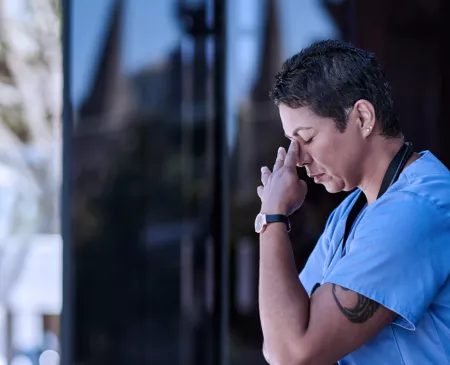The Buzz this Week
Healthcare workers have long experienced workplace violence daily as they care for patients, and such violence has been on the rise for at least the past decade. The healthcare and social services industries experience the highest rates of injuries caused by workplace violence, and employees in these industries are 5 times more likely to get injured than employees in all other industries. Workplace violence can range from verbal abuse to physical violence and even homicide, as seen with the deadly hospital shooting in Tulsa, Oklahoma, earlier this year.
Currently, there are no federal requirements healthcare employers must follow to protect employees from workplace violence, besides voluntary guidance provided by the Occupational Safety and Health Administration (OSHA). In addition, there are no federal laws that directly address violence against healthcare workers, though a handful of states have regulations for employers and laws to penalize offenders. Earlier this year, the U.S. Senate introduced a companion bill to one that passed the U.S. House of Representatives in 2021, the Workplace Violence Prevention for Health Care and Social Service Workers Act. This bill would require healthcare employers to develop comprehensive workplace violence prevention plans. Some organizations oppose the bill, arguing that hospitals already have policies in place to address violence, though there is agreement on the growing need to protect healthcare workers against violence, similar to protections for airline workers.
Why It Matters
Aggression against healthcare workers escalated as the COVID-19 pandemic intensified and persisted, bringing an increase of violence and hostility toward caregivers who were once hailed as heroes. A 2022 survey by National Nurses United, the nation’s largest union of registered nurses, found that nearly half of the 2,500 responding nurses reported an increase in workplace violence, which is more than double the percentage from the year prior. Another recent study found that 9 out of 10 caregivers experienced (or were in close proximity to) workplace violence.
As the pandemic becomes less severe, health systems are continuing efforts to rebuild the healthcare workforce and the workplace environment, which includes implementing robust workplace safety programs to protect employees—a key component of creating a culture of wellbeing, as discussed in a previous edition of Top Reads. Some hospitals are implementing their own policies and improving security measures and infrastructure, like adding personal panic buttons on employee badges to alert security for reinforcement and to track the location of the incident. Other health systems, like the Cleveland Clinic, have a workplace violence steering committee that develops safety standards for the entire organization. By addressing workplace safety, health systems are creating a culture of support to foster greater workforce vitality.
While there is renewed effort and momentum to improve workplace safety, employee mistreatment and workplace violence continues to be associated with higher levels of occupational distress and can lead to issues such as higher turnover, worker’s compensation claims, lost productivity, and negative impacts on the health system’s reputation. Health systems must take action to prevent mistreatment and preserve occupational wellbeing, or the alarming number of safety violations will continue, and caregivers will continue to leave the profession.
Related Links
AAMC:
Threats Against Healthcare Workers Are Rising. Here's How Hospitals Are Protecting Their Staffs
Healthcare Dive:
Efforts to Protect Health Workers from Violence on the Job Ramp Up
Healthcare Dive:
Threats, Obscenities, Homicide: Healthcare Workers Stressed by Pandemic Face Elevated Violence
JAMA Network:
Mistreatment Experiences, Protective Workplace Systems, and Occupational Distress in Physicians
Modern Healthcare:
Healthcare Workers Say Workplace Safety Plans Needed
Editorial advisor: Roger Ray, MD, Chief Physician Executive.







